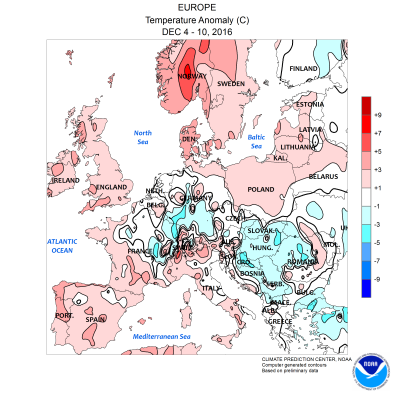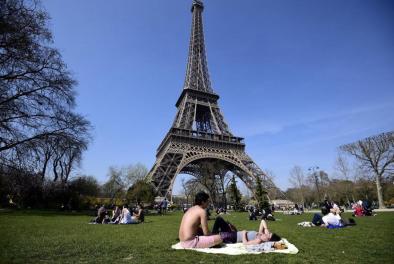Science Source
Signals of anthropogenic influence on European warming as seen in the trend patterns of daily temperature variance
- Searches for signals of anthropogenic warming over Europe in the spatial trend patterns for the variance and skewness (expressed by the 10th and 90th percentiles) of the distribution of daily mean temperature
- Makes comparisons between these patterns in the station records of the European Climate Assessment dataset for the 1976–99 period, the patterns associated with natural variability in the observations (which were empirically derived from the observations in the 1946–75 period), and the patterns of future warming and natural variability as simulated by the National Center for Atmospheric Research Community Climate System Model in the Challenge ensemble experiment
- Results indicate that a distinction can be made between temperature change due to natural variability and temperature change due to changes in external forcing
- Finds the observed variance trend patterns for the spring (March–May) and summer (June–August) warming 1976–99 are clearly different from the patterns for the change in variance associated with a warming due to natural variability in the observations
- Concludes that a change in an external forcing has to be invoked to explain the observed spring and summer warming
- Infers that the observed spring and summer variance trend patterns contain imprints consistent with anthropogenic warming, based on the evaluation of the greenhouse and natural variability patterns in the climate model simulations
- Finds the analysis of the variance trend patterns for the winter (December–February) season is inconclusive about identifying causes of the observed warming for that season
- Finds, unlike the other three seasons, the autumn (September–November) is for Europe a period of cooling in recent decades
- Finds the observed variance trend pattern for this season closely resembles the estimated pattern for the change in variance associated with a cooling due to natural variability, indicating that the observed autumn cooling can be ascribed to random weather variations in the period under consideration
Related Content
Real Time Data

Dec 16, 2016 | Climate Prediction Center | NOAA
Europe Weekly, Monthly, 3-Month Temperature Anomaly
Science Source
| World Meteorological Organization
Un/natural Disasters: Communicating Linkages Between Extreme Events and Climate Change
Susan Joy Hassol, Simon Torok, Sophie Lewis et al
Headline

Jul 11, 2016 | US News & World Report
Heat Waves Kill, Now We Know Why
Science Source
| Comptes Rendus Biologies / EU Community Action Programme for Public Health
Death toll exceeded 70,000 in Europe during the summer of 2003
JM Robine, SL Cheung, S Le Roy et al


